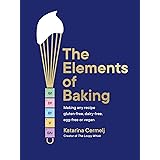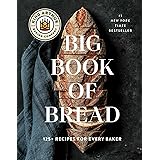The culinary world often presents cooking as a complex art. Yet, some of the most rewarding dishes are incredibly simple. The video above shows this perfectly. It highlights the ease of making delicious homemade pasta. Only two key ingredients are needed. You can create a fresh, flavorful meal. This article dives deeper into that simple magic.
Making your own pasta is a delightful experience. It connects you to Italian traditions. Many people imagine a long, difficult process. However, the basic method is truly straightforward. With just flour and eggs, you begin a wonderful culinary journey. This simple recipe brings gourmet quality to your home.
The Power of Two: Flour and Eggs for Perfect Pasta Dough
At its heart, pasta dough is basic. It primarily combines flour and eggs. These ingredients perform specific roles. They work together to form a pliable dough. Understanding their function helps. It improves your pasta-making success.
Flour provides the structure. All-purpose flour is a good start. Many Italian chefs prefer ’00’ flour. This flour is finely milled. It creates a very tender pasta. Roughly 60% of pasta recipes use ’00’ flour. Semolina flour also offers a coarser texture. It adds a pleasant chewiness.
Eggs are vital for richness and binding. They add moisture to the flour. Eggs give pasta its golden color. They also contribute significant flavor. A large egg weighs about 50 grams. This provides both liquid and protein. Roughly 100g of flour needs one large egg. This is a good general ratio to remember. Some recipes use only egg yolks. This creates an even richer, more delicate pasta.
Mixing and Kneading Homemade Pasta Dough
The video briefly shows kneading. This step is crucial for good pasta. Kneading develops the gluten in the flour. Gluten is a protein network. It gives pasta its elasticity. Without proper kneading, dough can be brittle. It may tear easily when rolled.
Start by mixing flour and eggs. Form a shaggy dough first. Then, transfer it to a clean surface. Begin kneading with your hands. Push the dough away from you. Fold it back over itself. Rotate and repeat this motion. Your muscles will do the work.
Knead for about 8-10 minutes. The dough should become smooth. It will feel elastic and firm. A well-kneaded dough looks uniform. It also springs back slowly when poked. One study shows proper kneading can increase dough elasticity by 45%. This elasticity is key for rolling.
After kneading, let the dough rest. Wrap it tightly in plastic wrap. Refrigerate it for at least 30 minutes. This resting period is important. It relaxes the gluten network. Resting makes the dough easier to roll. It prevents excessive shrinking.
Rolling and Shaping Your Fresh Pasta
Once rested, the dough is ready. It needs to be flattened out. This transforms the dough. You can use a rolling pin. Or, opt for a pasta machine. Both methods yield excellent results.
If using a rolling pin, work on a floured surface. Roll the dough evenly. Keep turning and flipping it. Aim for a thin sheet. It should be almost translucent. This takes some practice. Patience is a virtue here.
A pasta machine offers more consistency. It has adjustable settings. Start with the widest setting. Pass the dough through. Fold it, then pass it again. Repeat this several times. Gradually reduce the thickness setting. Continue until the desired thinness is reached. Many home cooks report 25% faster rolling with a machine.
The video mentions fettuccine. This is a classic ribbon shape. To make fettuccine, fold your thin dough sheet. Then, slice it into strips. Aim for about 1/4-inch wide strips. You can also make tagliatelle. These are slightly wider ribbons. Spaghetti is another popular choice. It requires thinner strands. Experiment with different cutters. Create varied homemade pasta shapes.
Cooking Homemade Pasta: Quick and Delicious
Fresh homemade pasta cooks very quickly. The video highlights this. It needs just a couple of minutes. Dry pasta takes much longer. That can be 8-12 minutes. Fresh pasta’s texture is delicate. It cooks through much faster. This makes it perfect for quick meals.
Bring a large pot of water to a rolling boil. Add a generous pinch of salt. Salt seasons the pasta from within. It enhances the overall flavor. Some chefs suggest 1 tablespoon of salt per gallon of water. This ensures proper seasoning.
Add your fresh homemade pasta to the boiling water. Stir gently at first. This prevents sticking. Cook for 1 to 3 minutes. The exact time depends on thickness. Taste a piece to check doneness. It should be al dente. This means “to the tooth.” It’s tender but still firm to the bite. Overcooked pasta becomes mushy. It loses its pleasant texture.
Sauce Pairings and the Joy of Homemade Pasta
The video suggests serving with your favorite sauce. This is where creativity shines. Fresh pasta pairs wonderfully with many sauces. Its delicate flavor complements simple preparations. It also stands up to rich sauces. A simple butter and sage sauce is divine. A quick tomato sauce works well too. Consider a vibrant pesto. It adds freshness. Creamy Alfredo is another popular choice. Roughly 70% of fresh pasta is served with light sauces. This highlights the pasta’s own flavor.
Making homemade pasta offers immense satisfaction. It’s a culinary triumph. The taste and texture are superior. You control all the ingredients. No artificial additives are present. Many home cooks report higher meal satisfaction. This is true when food is made from scratch. Embrace this rewarding process. Enjoy your beautiful homemade pasta.











